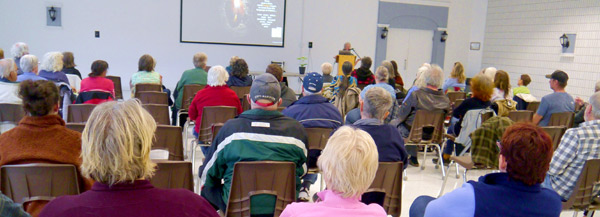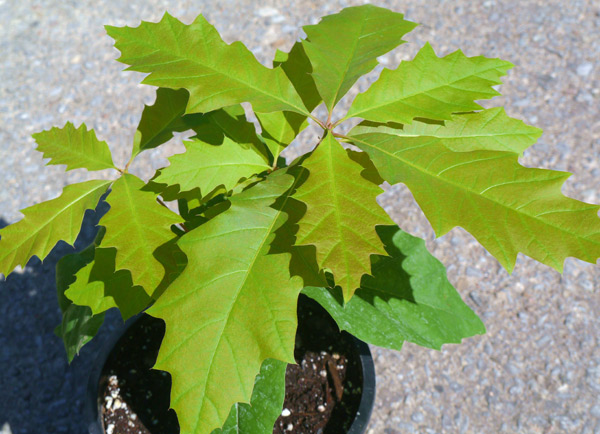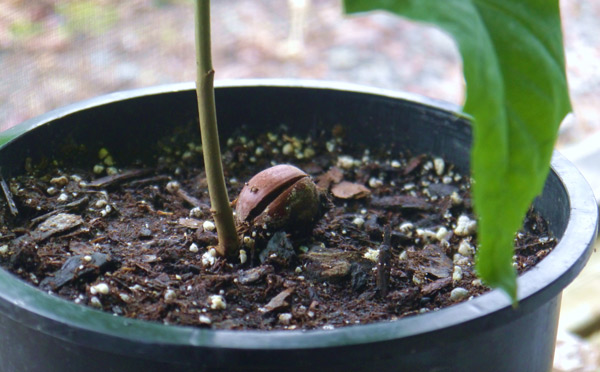Little Forests help replenish urban areas as gifts to the earth
Administrator | Apr 28, 2024 | Comments 0
Story and photos by Sharon Harrison
Trees, like people, prefer to live in communities.
‘We should not be planting trees, we should always be planting forests, even some little forests,” said Joyce Hostyn, who serves with Little Forests Kingston – which wants to transform the city into a nature positive, equitable city in a forest by 2030.
In the County for a presentation on the topic of Miyawaki forests (also little forests or tiny forests, also pocket forests) Hostyn described them as “songs and poems and love letters to the land; bringing back magic to the land.”
As well as being co-founder of Little Forests Kingston, Hostyn is a master gardener and a teacher. Little Forests Kingston is an organization inspired by Japanese botanist Dr. Akira Miyawak’s approach to tree planting and growing forests. Little Forests explains its mission is collaborations between plants, soil, organisms, climate, geology, land and people.
Known as the Miyawaki forest method, it is essentially the idea of growing a number of native trees in a small area, close together, where they grow faster together in close proximity to one another, thereby improving the land, the ecology and bio-diversity.
 The well-attended talk formed part of Earth Day events and was hosted by the Prince Edward County Garden Club during Earth Week at the Prince Edward Community Centre.
The well-attended talk formed part of Earth Day events and was hosted by the Prince Edward County Garden Club during Earth Week at the Prince Edward Community Centre.
It covered information on rapid afforestation and showed how and why individuals and communities can plant, care for and restore relationships with indigenous forests and the diversity of the beings who call them home (afforestation is the process of introducing trees and tree seedlings to an area that has previously not been forested).
Hostyn’s talk and slideshow spoke to the human-centric hierarchy in nature, the important Indigenous connection to the land, but also things like the importance of insects’ role in ecology, and the importance of all the languages of the land.
Addressed during the presentation were soil texture as it relates to tree species selection, the importance of replanting the land and bringing forests back to the land, how healing forests and green spaces are well known for mental health improvement, as well as how one tree can provide multi layers and the amount of biodiversity it can attract.
“We’re only starting to realize the importance of insects and that even hummingbirds rely on the insects that our trees attract to feed their young,” said Hostyn.
“The more we get to know land, and all of these different beings, the more you become good stewards. For little forests, it’s like all the languages of the land, and all of these different beings, none more important than the other.”
She noted how climate change is changing things and provided an example of our how insects may arrive but the flowers they are depending on aren’t yet there, due to a shift in climate.
“As new species migrate to the area and with trees in particular, they can’t move fast enough, so we have to help them move by bringing in more Carolinian species.”
Forests Ontario recommends that 50 per cent of seeds should be local, and 50 per cent come from seeds from further south because of climate, she said.
“A red oak here has different genetics from a red oak from Niagara.”
She said sugar maples and red maples, as an example, we might want to sow seeds from the west, because their genetics are used to drought, as it’s drier there now than the forests we have.
“These are things that we are starting to think about; some of us just want to plant trees, and others want to learn as much as possible,” she said.
Her presentation was structured on a series of questions from Dwayne Donald, who his Cree and from the University of Alberta, where she asked everyone to think about his questions.
“His questions we have to ask ourselves, and I think this is related to that concentric world view, are:
Where is here? Whom else is here alongside me? What gives and sustains life here? How can I participate in a life that is here, and how can we live well together here?”
“Dwayne Donald says if you want to understand the Indigenous knowledge, you have to understand the eco-system that people come from and how to live with it as a network for thousands of years. Since, why getting to know the history of the original peoples is so important, and understanding the eco-systems of forests that were covering this land.“
Biodiversity is still declining, she said. “We are again still in a deep biodiversity crisis, which is very much linked to the climate crisis and recognition that they are intertwined.”
Hostyn explained the vision of Little Forests Kingston.
“Sitting in a forest, imagine its 2030, and every child can see at least three trees from their window. They can walk or wheel to school protected by a canopy of at least 30 per cent, and that’s minimum. Can you imagine that, and experience the magic and the relationship of a flourishing wild space?”
She also spoke to how Little Forests Kingston is starting to work on the concept of imagining how many species, and putting yourselves into other species’ perspectives and doing relational legwork.
“For Little Forests, it’s really about plant web work I think, whether it be the web work of planting trees, the web work of a forest, or whether it’s a web work between the people that surround to help bring that forest, to help it grow.”
She quoted Harold R. Johnson:
“Imagine love so immense that a mere human is incapable of enduring it all. Imagine happiness likewise so intense that at its height, it’s hard to endure. You are plugged into the root systems of the forest. Your experience can translate energy and frequencies; you are repeatedly told by the spirits and the plants and animals and insects, you are a beautiful human being.”
“Can you imagine the forest loving us like this, and what can we give to the forest?” she asked.
She asked those in attendance to imagine from the land’s point of view.
“We are not used to doing it. We are not used to looking at the land’s point of view, what the land wants to become and thinking deeply about our roles, and our relationship with the plants.”
She suggests looking at ways to start reconnecting with the soil because it really determines what trees can grow.
“We are not used to thinking, and they are now only starting to understand the biodiversity of the soil and the ground. Working with Little Forests, we pay a lot of attention to the soil because there is more biodiversity; there are more creatures underneath than there are above.”
Water is also an important component in the conversation and also in the context of the watershed where Hostyn says there is a series of activities from Indigenous thinking. Those suggest stepping back and thinking about where the water comes from and where it is going, and what relatives does the water connect with.
“Look back, looking at today, going back a hundred years and trying to imagine, and going a hundred years forward and trying to protect as we bring this healing,” said Hostyn. “At Little Forests, we haven’t done a lot with water yet, but that’s something that we really want to start working on.”
She shared another quote, this time from Richard Wagamese:
“I have been considering the phrase ‘all my relations’ for some time now; it’s hugely important, it’s our saving grace in the end. It points to the truth that we are all related, all connected, we all belong to each other. The most important word is all. Not just those who look like me, sing like me, dance like me, speak like me, pray like me, or behave like me, all our relations. It means every person, just as it means every blade of grass, rock, mineral and creature. We live because everything does. If we were to collectively choose to live that teaching, the energy of that change of consciousness would heal us all.”
“That’s the original Miyawaki method, and heals the planet. We do it one person, one plant at a time, we are connected, we are the answer,” she said. To start, people must understand the soil as soil is the most important thing, but she emphasises that they don’t dig.
“We are no dig, no dig as much as possible because knowing the soil has an underground city, and if we dig, we just disrupt that underground city; there is so much happening in the underground life,” she said.
There are four layers to planting: shrubs, under storey, tree and canopy layer.
Because there are so many different species, she said people used to think they couldn’t plant trees close together as they will compete, but she said, they cooperate instead.
“There is competition and there is co-operation. They use different levels for water, and they each trade as a different method and different timing for water, their roots go in different distances and they partner with microorganisms and fungi and it’s like trees and people, and when I see trees planted far apart, you just need some friends.”
 Six lucky people at the session won a red oak tree seedling (including this writer who claims to never win anything) through a free door prize raffle, where Lise Bois, co-chair of the County Garden Club noted how oaks support close to 500 species of butterflies and moths, “which are needed as they provide caterpillars for the birds and as Joyce said, ‘it’s a full circle: you plant a tree, it helps the butterflies and moths, it helps the land, it helps us, we are all part it,.
Six lucky people at the session won a red oak tree seedling (including this writer who claims to never win anything) through a free door prize raffle, where Lise Bois, co-chair of the County Garden Club noted how oaks support close to 500 species of butterflies and moths, “which are needed as they provide caterpillars for the birds and as Joyce said, ‘it’s a full circle: you plant a tree, it helps the butterflies and moths, it helps the land, it helps us, we are all part it,.
The red oaks were grown on a small tree farm, Edwin Farms, in Northport by Nick Sorbara.
“The seed is sourced from the tree on Storms Road in Milford, which is a huge, huge red oak,” said Bois. “Nick tends to source all his seed locally for the trees he grows.”
Little forests or pocket forests can be planted in any shape, but Hostyn said maximizing edges means the more curves you have, the more edge there is, and the more edge will bring more diversity. For example, she noted that forests generally don’t grow in squares.
“Pocket forests are gifts to the earth.”
More on Little Forests at https://littleforests.org/
Filed Under: Arts & Culture • Featured Articles • News from Everywhere Else
About the Author:

































